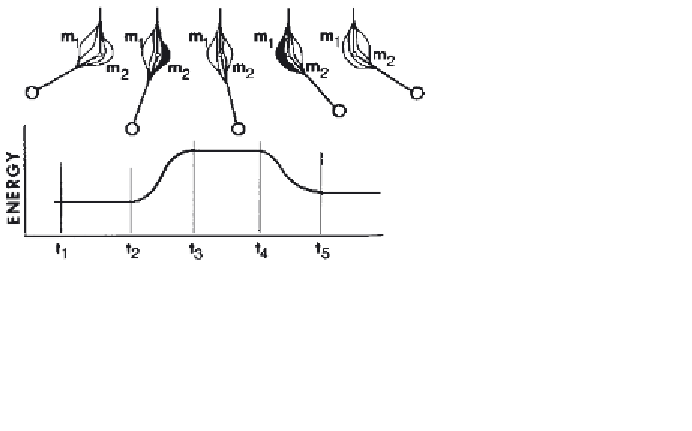Biomedical Engineering Reference
In-Depth Information
The individual segment energies continuously change with time, so it is
not surprising that the sum of these energies will also change with time. How-
ever, the interpretation of changes in
E
b
must be done with caution when one
considers the potential for transfer of energy between segments and the num-
ber of possible generators and absorbers of energy at each joint. For example,
transfers of energy between segments (see Section 6.0.9) will not result in
either an increase or a loss in total body energy. However, in other than
the simplest movements, there may be several simultaneous concentric and
eccentric contractions. Thus, over a period of time, two muscle groups may
generate 30 J, while one other muscle group may absorb 20 J. The net change
in body energy over that time would be an increase of 10 J. Only through a
detailed analysis of mechanical power at the joints (see Section 6.3.1.4) are
we able to assess the extent of such a cancellation. Such events are obviously
inefficient but are necessary to accomplish many desired movement patterns.
Consider now a simple muscular system that can be represented by a pen-
dulum mass with a pair of antagonistic muscle groups,
m
1
and
m
2
, crossing
a simple hinge joint. Figure 6.16 shows such an arrangement along with a
time history of the total energy of the system. At
t
1
, the segment is rotating
counterclockwise at
ω
1
rad
/
s. No muscle activity occurs until
t
2
when
m
2
contracts. Between
t
1
, and
t
2
, the normal pendulum energy exchange takes
place and the total energy remains constant. However, between
t
2
and
t
3
,
muscle
m
2
causes an increase in both kinetic and potential energies of the
segment. The muscle moment has been in the same direction as the direction
of rotation, so positive work has been done by the muscle on the limb seg-
ment, and the total energy of the limb has increased. Between
t
3
and
t
4
, both
muscles are inactive, and the total energy remains at the higher but constant
level. At
t
4
, muscle
m
1
contracts to slow down the segment. Energy is lost
by the segment and is absorbed by
m
1
. This is negative work being done by
the muscle because it is lengthening during its contraction. Thus, at
t
5
the
segment has a lower total energy than at
t
4
.
Figure 6.16
Pendulum system with muscles. When positive work is done, the total
energy increases; when negative work is done, the total energy decreases.










Search WWH ::

Custom Search